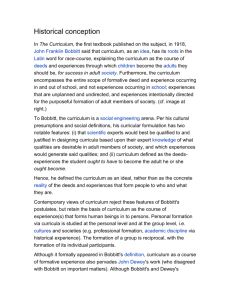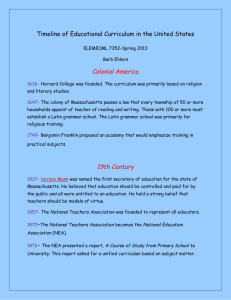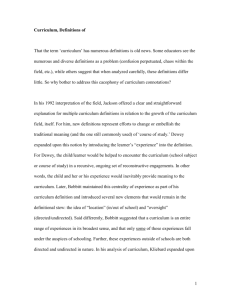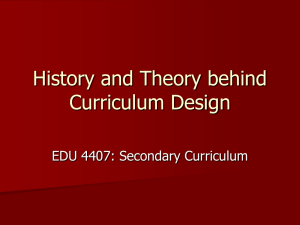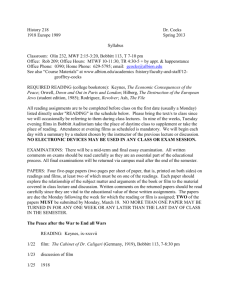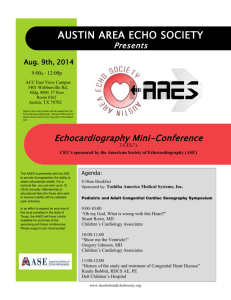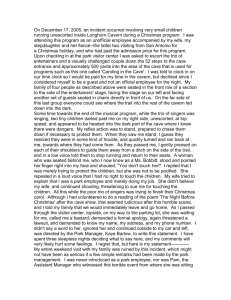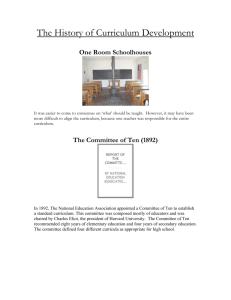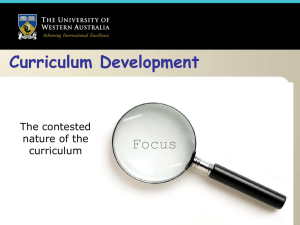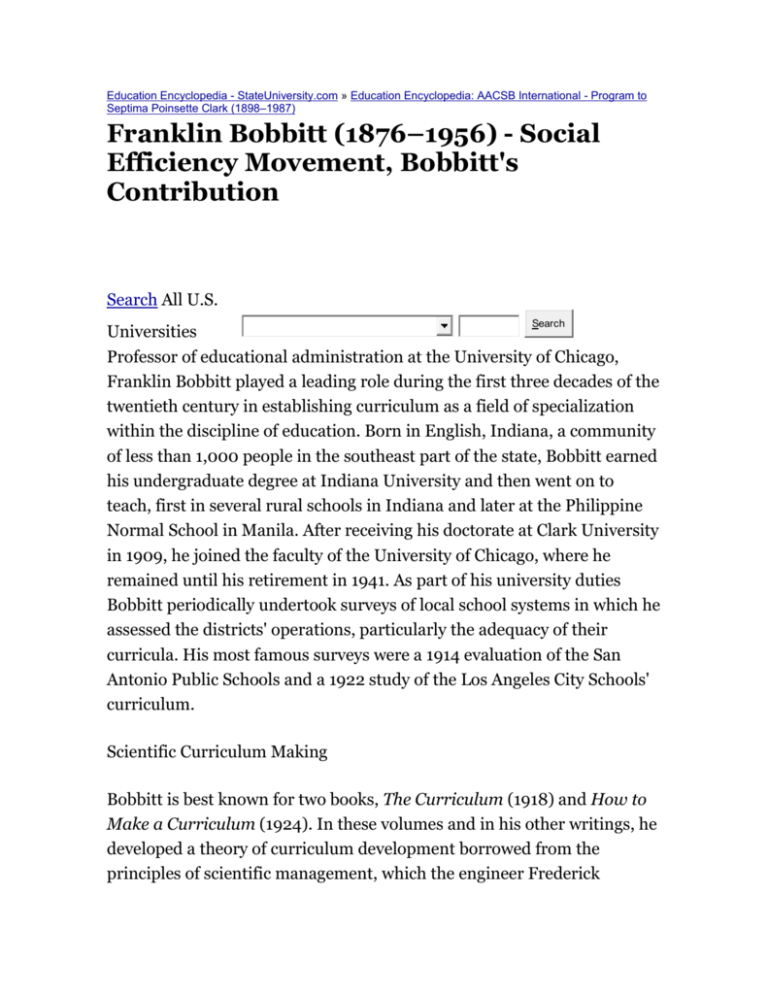
Education Encyclopedia - StateUniversity.com » Education Encyclopedia: AACSB International - Program to
Septima Poinsette Clark (1898–1987)
Franklin Bobbitt (1876–1956) - Social
Efficiency Movement, Bobbitt's
Contribution
curriculumeducationcenturyschools
Search All U.S.
Search
Universities
Professor of educational administration at the University of Chicago,
Franklin Bobbitt played a leading role during the first three decades of the
twentieth century in establishing curriculum as a field of specialization
within the discipline of education. Born in English, Indiana, a community
of less than 1,000 people in the southeast part of the state, Bobbitt earned
his undergraduate degree at Indiana University and then went on to
teach, first in several rural schools in Indiana and later at the Philippine
Normal School in Manila. After receiving his doctorate at Clark University
in 1909, he joined the faculty of the University of Chicago, where he
remained until his retirement in 1941. As part of his university duties
Bobbitt periodically undertook surveys of local school systems in which he
assessed the districts' operations, particularly the adequacy of their
curricula. His most famous surveys were a 1914 evaluation of the San
Antonio Public Schools and a 1922 study of the Los Angeles City Schools'
curriculum.
Scientific Curriculum Making
Bobbitt is best known for two books, The Curriculum (1918) and How to
Make a Curriculum (1924). In these volumes and in his other writings, he
developed a theory of curriculum development borrowed from the
principles of scientific management, which the engineer Frederick
Winslow Taylor had articulated earlier in the century in his efforts to
render American industry more efficient.
The key principal for Taylor was the task idea, the notion that each worker
should be given a narrowly defined production assignment that he was to
perform at a specific rate using certain predefined procedures. It was the
responsibility of an emerging profession of efficiency experts to identify
these precise steps. The procedures for curriculum planning, which
Bobbitt referred to as job analysis, were adapted from Taylor's work and
began with the identification of the specific activities that adults
undertook in fulfilling their various occupational, citizenship, family, and
other social roles. The resulting activities were to be the objectives of the
curriculum. The curriculum itself, Bobbitt noted, was comprised of the
school experiences that educators constructed to enable children to attain
these objectives.
Some of these objectives, according to Bobbitt, were general in nature and
represented the knowledge that all children needed to prepare for their
responsibilities as adult citizens. Such an education, he maintained,
would provide students with the large group consciousness necessary for
them to act together for the common good. Other objectives, however,
were more specific and constituted the skills that youth needed to prepare
for the array of specialized occupations that adults held in modern society.
The curriculum that Bobbitt advocated included elements of general
education for all youth, but was for the most part differentiated into a
number of very specialized vocational tracks. Influenced no doubt by the
then-popular mental testing movement, Bobbitt believed that schools
should assign children to these specialized curricular tracks, on the basis
of assessments of their intellectual abilities, which fore-told their ultimate
destinies in life.
Social Efficiency Movement
Bobbitt along with a handful of other early-twentieth-century educators,
including W. W. Charters, Ross L. Finney, Charles C. Peters, and David
Snedden, gave life to what has come to be called the social efficiency
movement in education. The schools, for these individuals, were a key
institution in dealing with the disruptions and dislocations in American
life that they associated with the nation's late-nineteenth-and earlytwentieth-century transformation into an urban, industrial society. The
purpose of education, they argued, was to prepare youth for the specific
work and citizenship roles, which they would hold when they reached
adulthood, and in so doing render society more orderly and stable. The
test for the schools and its program, as these thinkers saw it, was its utility
in fulfilling this social purpose.
Bobbitt's Contribution
Bobbitt's legacy falls into four areas. First, he was one of the first
American educators to advance the case for the identification of objectives
as the starting point for curriculum making. He, along with the authors of
the National Education Association'sCardinal Principles of Secondary
Education, argued that the content of the curriculum was not self-evident
in the traditional disciplines of knowledge, but had to be derived from
objectives that addressed the functions of adult work and citizenship.
Education was not important in its own right for Bobbitt. Its value lay in
the preparation it offered children for their lives as adults. Second, his socalled scientific approach to curriculum making served as a precedent for
the work of numerous educators during the next half-century in spelling
out the procedures for designing the course of study. It was a method that
became and has remained the conventional wisdom among American
educators concerning the process of curriculum development.
Third, Bobbitt along with other early-twentieth-century efficiencyoriented school reformers made the case that the curriculum ought to be
differentiated into numerous programs, some academic and preparatory
and others vocational and terminal, and that students ought to be
channeled to these tracks on the basis their abilities. His work lent
credence to efforts to vocationalize the curriculum, and provided
legitimacy to what has become one of the most questionable features of
the modern school curriculum, the practices of tracking and ability
grouping. Finally, Bobbitt was one of the first American educators to
define the curriculum as an instrument of social control or regulation for
addressing the problems of modern society. True to the ideals of social
efficiency, he saw the task of the schools as that of instilling in youth the
skills, knowledge, and beliefs that they required to function in the urban,
industrial, and increasingly heterogeneous society that America was
becoming during the early years of the twentieth century.
See also: CURRICULUM, SCHOOL.
BIBLIOGRAPHY
BOBBITT, FRANKLIN. 1918. The Curriculum. Boston: Houghton Mifflin.
BOBBITT, FRANKLIN. 1922. Curriculum Making in Los Angeles. Chicago:
University of Chicago Press.
BOBBITT, FRANKLIN. 1924. How to Make a Curriculum. Boston:
Houghton Mifflin.
FRANKLIN, BARRY M. 1986. Building the American Community: The
School Curriculum and the Search for Social Control.London: Falmer.
NATIONAL EDUCATION ASSOCIATION. 1918. Cardinal Principles of
Secondary Education: A Report of the Commission of the Reorganization
of Secondary Education. Washington, DC: U.S. Government Printing
Office.
BARRY M. FRANKLIN
Boyd H. Bode (1873–1953) [next][back] College Board of Trustees and University - Structure and
Composition, Governance, Authority, Responsibilities, Board Committees
Citing this material
Please include a link to this page if you have found this material useful for
research or writing a related article. Content on this website is from highquality, licensed material originally published in print form. You can
always be sure you're reading unbiased, factual, and accurate information.
Highlight the text below, right-click, and select “copy”. Paste the link into
your website, email, or any other HTML document.
User Comments
Name
Email
Your email address will be altered so spam harvesting bots can't read it easily.
Hide my email completely instead?
Body
Cancel or
Save changes
12 months ago
Angela McMullen
Franklin Bobbit info
5 months ago
baju bayi murah toko online murah
so many entertaining stuff in your blog You have done your best by making us
know about this. It was a brief and wide presentation which can easily be
understood by anyone.
5 months ago
baju bayi murah toko online murah
i see you got really very useful topics I am satisfied to discover this publish very
useful for me
6 months ago
low cost landscape designs
Thanks for sharing such nice information about Social Networks. This information
I can use in my tour. Thanks a lot low cost landscape designs
almost 3 years ago
wondemagegn chekol
what is the difference between social reconsractionism and social efficiency?
Copyright © 2013 Net Industries and its Licensors – All Rights Reserved – Terms of Use
Read more: Franklin Bobbitt (1876–1956) - Social Efficiency Movement,
Bobbitt's Contribution - Curriculum, Education, Century, and Schools StateUniversity.com http://education.stateuniversity.com/pages/1794/B
obbitt-Franklin-1876-1956.html#ixzz2coc0zIRW
Fuente: http://education.stateuniversity.com/pages/1794/Bobbitt-Franklin-1876-1956.html

